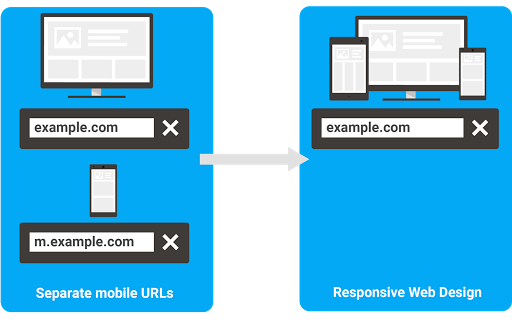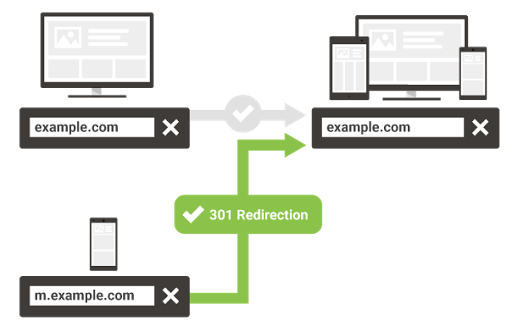Четверг, 14 сентября 2017 г.
Поскольку адаптивный дизайн неизменно набирает популярность, у веб-мастеров все чаще возникают вопросы о том, как перейти на него и отказаться от мобильной версии сайта. Ниже приведены рекомендации, которые помогут вам выполнить этот переход так, чтобы ваш сайт не утратил свои позиции в результатах поиска Google.
Как обеспечить корректное индексирование веб-страниц после перехода на адаптивный дизайн
К переходу следует подготовиться. Если вы планируете использовать те же URL, что и на версии сайта для ПК, вам потребуется лишь настроить переадресацию 301 с мобильных URL на URL страниц с адаптивным дизайном.
Ниже приведены подробные инструкции.
- Подготовьте сайт с адаптивным дизайном.

-
Настройте переадресацию
301таким образом, чтобы прежние мобильные URL указывали на обновленные страницы с адаптивным дизайном. Эту процедуру необходимо выполнить для каждого мобильного URL по отдельности.
- Убедитесь, что для URL сайта не заданы какие-либо настройки, связанные с адаптацией для мобильных устройств, например HTTP-заголовок Vary или переадресация, которая зависит от определенных условий.
-
Рекомендуем применить атрибут
rel=canonicalк URL страниц с адаптивным дизайном, которые указывают на самих себя.
Если вы используете динамический показ и хотите перейти на адаптивный дизайн, то добавлять или изменять переадресацию не нужно.
О преимуществах перехода на адаптивный дизайн
После перехода вы будете тратить меньше времени и усилий на техническое обслуживание сайта и создание отчетов. Вам больше не придется работать с несколькими версиями одной и той же страницы. Также вам станет гораздо проще использовать передовые методики и технологии, например атрибут hreflang для многоязычных сайтов, технологию AMP для ускорения загрузки страниц, а также структурированные данные, которые обеспечивают доступ к специальным функциям в расширенных результатах поиска.
Если у вас есть вопросы, то их можно задать на форуме для веб-мастеров.
